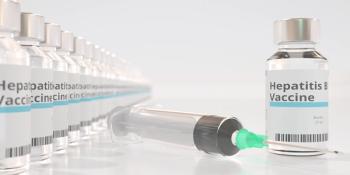
Collaborative platforms drive health care efficiencies and streamline workflow
Easing provider-payer communications frees up resources for improving patient care
Health care providers face increased pressure to
In addition to burdening an already strained workforce, administrative tasks are costly. In fact, studies show that the health care industry could save
Emerging cloud-based technologies are revolutionizing the way
Access to health plans
Providers and staff devote a significant amount of time each day to navigating billing and insurance-related functions across numerous health plans. These tasks typically require lengthy phone calls, mountains of paperwork, and the pursuit of hard-to-locate data needed for completing a patient’s file.
By improving communication between physicians and payers, a network can facilitate payer-provider collaboration and align financial incentives, reduce
Facilitating document exchange
Continuous document interchange, as well as communication between health plans and providers, is an essential component of the high-quality health care experience. Tech solutions can support this bi-directional exchange of information to reinforce vital clinical workflow by transmitting administrative, financial, and clinical information securely and in real time.
Examples of this type of information include fee schedules, risk adjustment information,
Real-time membership verification and coverage information
Effective technologies centered on collaboration can simplify membership verification and coverage transfer for payers and providers.
On average,
In addition, these systems can filter and apply specific plan search criteria, as well as define default data values and electronic data interchange parameters aligned with the requirements of the payers and the providers.
According to recent research, payers can save an estimated
Streamlining claims status inquiry and management
An estimated
Electronic workflows automate the delivery of claim receipt confirmation, adjudication status and payment details, allowing end users to view a claim’s status at any time and see all clam submissions, regardless of the submission method. These tools boost provider satisfaction by accommodating costly claim exceptions for numerous entities—from the largest provider practices to solo practitioners, transportation companies and amateur billers. In addition, they dramatically reduce costs by replacing paper claims, costly clearinghouses and health plan-subsidized submission software, editing claims to minimize rejections and saving an estimated
Simplifying prior authorizations
Streamlining prior authorization procedures is another important advantage of using modern payer and provider collaboration technologies. As the complexity of medical regulations, guidelines, and standards continues to increase, this process can become burdensome for payers, providers, and patients alike.
Surprisingly, only
With the appropriate digital tools, automatic requests and applications can be made for the exchange of clinical, financial, and administrative data in real time. This allows providers to have access to the most up-to-date information regarding medical status, approvals, and denials, which in turn enables a greater focus on patient care.
Electronic collaboration between payers and providers from beginning to end ultimately increases workflow efficiencies and provides integrated data resources that are current, user-friendly, and intuitive across the entirety of the health care spectrum. When communication flows freely and ambiguity is removed, the results are increased efficiency and precision for the benefit of the patient.
Lisa Hebert is senior director of product management at
Newsletter
Stay informed and empowered with Medical Economics enewsletter, delivering expert insights, financial strategies, practice management tips and technology trends — tailored for today’s physicians.








